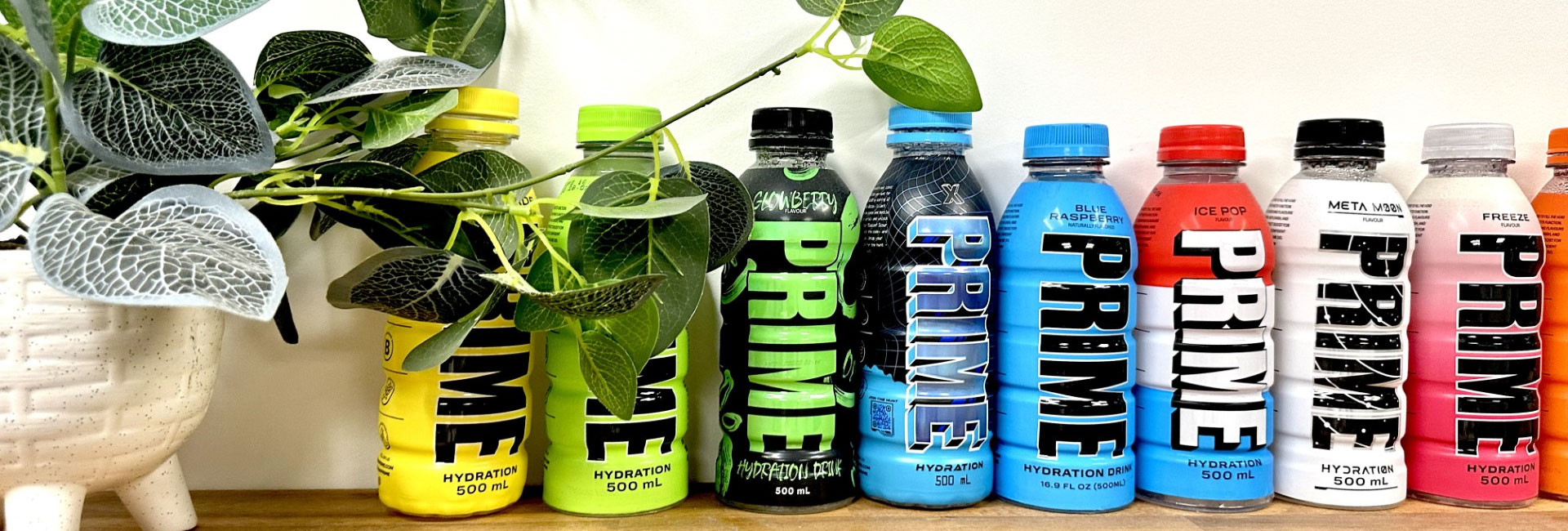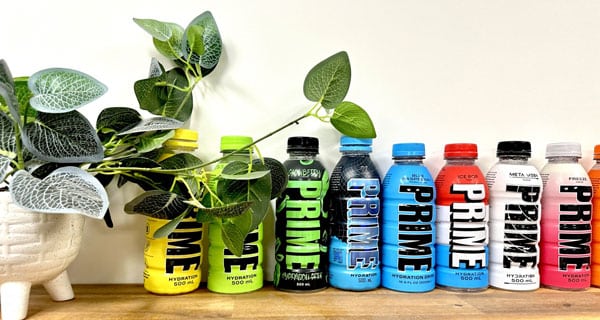
Used under a Creative Commons Licence
Product Packaging and the Law: What’s Fair Game?
Let’s set the scent… You are a small drink company in Israel with a fresh product—a uniquely shaped water bottle with a distinct, vibrant colour scheme designed to stand out on crowded supermarket shelves.
You know you’ve got a winner and indeed, sales are booming until, one day, a similar bottle starts selling.
Yes, it’s a competitor and it has used your bottle’s silhouette and a similar design.
Could this competitor’s bottle mislead customers into thinking they’re picking up your product? That is the million-dollar question.
Product packaging cases like this hypothetical one raise complex questions around what’s legal, what’s imitation, and where courts draw the line.
We see it all the time at our law firm and the law on product packaging—or “get-up” as it’s known legally—can be hard to pin down.
It’s all about context, and the Federal Court of Australia has made clear that no one-size-fits-all rule applies, especially with fast-moving consumer goods. Here’s a look at how recent court decisions help define this “packaging puzzle”.
Hypothetical Case: Where’s the Line?
We are going back to the water bottle scenario above.
You might think you’ve got a straightforward claim against the competitor for misleading or deceptive packaging. Yet, a successful case requires evidence that your packaging has built a strong, recognisable reputation with consumers. Beyond that, you’d need to show the competitor’s design crosses a line, creating an association in customers’ minds that’s not just incidental.
It can be a high bar to clear, and recent cases in Australia reveal some challenges that businesses can face when trying to protect the distinct “look” of their products.
Case Study 1: The “Better Beer” Dispute
In one recent Federal Court case, Brick Lane Brewing Co. alleged that Torquay Beverage Co.’s “Better Beer” mimicked the look of Brick Lane’s “Sidewinder.” Here’s what happened: Both products launched within days of each other, showcasing off-white cans with striped colour schemes. Brick Lane argued that “Better Beer” created confusion, leading consumers to think they were picking up Brick Lane’s low-alcohol product.
But the court didn’t buy it.
Justice Stewart acknowledged the visual similarities but decided they didn’t amount to consumer deception. Why? Because the names of the beers were clearly different, and even two documented instances of “momentary confusion” didn’t sway the court. Justice Stewart emphasised that customers choosing beer likely wouldn’t mix up two brands after a closer look, especially given the different branding elements on each can.
The judge quoted another case saying: “if an article is properly labelled as to show the name of the manufacturer or the source of the article its close resemblance to another article will not mislead an ordinary reasonable member of the public”. The judge concluded that, given all the factors, there was insufficient evidence to show that a reasonable beer consumer would have recognised Brick Lane’s Sidewinder branding or confused Better Beer with Sidewinder due to similarities in appearance.
Overall, the distinctive names and notable differences in branding, as well as the nature of the beer market, he thought, would prevent consumers from mistakenly associating the two products.
For a link the case click here:
Case: Brick Lane Brewing Co Pty Ltd v Torquay Beverage Co Pty Ltd [2023] FCA 66; 170 IPR 195
Case Study 2: Raw C vs. Nature’s Delight
Another 2023 decision involved coconut water brands.
Raw C argued that Nature’s Delight’s redesigned packaging for its coconut water was too close to its own. The products’ cartons shared a similar shape, colour scheme, and packaging layout, which Raw C said could mislead consumers into believing the two brands were affiliated.
Yet, the judge (Justice Nicholas) saw it differently.
He said that the carton style and colours were typical for coconut water packaging—blue, green, and white are as common in coconut water as sand on a beach.
The judge highlighted that any confusion was brief, momentary at most, and that Nature’s Delight’s packaging changes were not aimed at cashing in on Raw C’s reputation.
Ultimately, the judge found that, aside from the brand names, there were key visual differences between the applicant’s and respondent’s packaging. The 2021 packaging used by the respondent differed in its presentation of “Pure Coconut Water” and included a brown and white coconut image, creating a less tidy and more cluttered look than the applicant’s simpler, more organised design featuring the Raw C device mark. Therefore, the judge was not convinced that the 2021 packaging would likely mislead or deceive ordinary consumers of coconut water.
The 2022 packaging further diverged from the applicant’s design with three notable changes: a pink background instead of white, green palm fronds near the corners, and the word “Delightfully” in dark brown for emphasis. These alterations made the 2022 packaging even less similar to the applicant’s packaging, reducing the chance of consumer confusion.
The Raw C case serves as a reminder that a bit of lookalike packaging doesn’t automatically lead to a finding of misleading or deceptive conduct under the Australian Consumer Law.
This is important.
Natural Raw C had argued that Maicap’s “Nature’s Delight” coconut water packaging was so similar to its own that consumers would mistakenly believe they were the same or connected products. Yet, the judge didn’t see it that way saying that the distinctions—clear brand names, different font styles, layout, and imagery—were sufficient for the reasonable consumer to tell them apart.
Brand names, especially for popular, widely available products, are what consumers tend to focus on.
Does this mean that in a crowded market, slight overlaps in packaging aren’t enough to blur the lines of brand identity?
In much of a way, the case sets a practical precedent: while brands need to protect their look, everyday consumers are trusted to notice the differences that really matter.
For a link the case click here:
Case: Natural Raw C Pty Ltd v Maicap Pty Ltd [2023] FCA 51
Why Similar Cases Turn on Unique Details
These cases and others make one thing clear: The question of packaging similarity isn’t black and white. It depends on factors like how well-known a product’s design is and whether a competitor’s similar packaging appears designed to mislead. The “Better Beer” and “Raw C” cases underline that reputation counts, but we find when acting for clients, that it is just one piece of a complex puzzle.
For instance, the timing of a product’s launch, specific design choices, and the target market all influence the court’s decision.
Reputation counts
The foundation of a successful packaging claim often lies in how much reputation a product’s design has built. In the “Better Beer” case, Brick Lane’s Sidewinder hadn’t been on the market long enough to cement itself in the minds of customers. Without that, a court may hesitate to find that consumers would confuse it with a newcomer’s product.
What happens if confusion is only fleeting – double take?
In both cases, the court emphasised that fleeting moments of confusion don’t amount to deception. If a consumer does a “double take” and realises the product they picked up isn’t what they thought, that’s often not enough for a legal win. Justice Stewart’s decision in the Better Beer case reflected this, noting that beer drinkers would likely spot the distinct names on each can and make their choice accordingly.
Context Matters
Courts also look closely at industry trends and market norms. In the Raw C case, Justice Nicholas pointed out that certain colours and shapes are typical in coconut water packaging, so Nature’s Delight’s design choices didn’t necessarily signal an attempt to copy. The court recognised that elements commonly used across an industry don’t automatically imply intentional similarity.
Where Sharon Givoni Consulting Can Help
As you can see, product packaging disputes can be murky territory.
We work with clients to navigate this nuanced landscape.
Whether you’re launching a new product or facing concerns about a competitor’s look-alike packaging, we’re here to help you build a proactive strategy.
From assessing the risks of packaging designs to representing your interests in disputes, we offer tailored services that draw on extensive experience with fast-moving consumer goods.
Please note the above article is general in nature and does not constitute legal advice.
Please email us info@iplegal.com.au if you need legal advice about your brand or another legal matter in this area generally.


